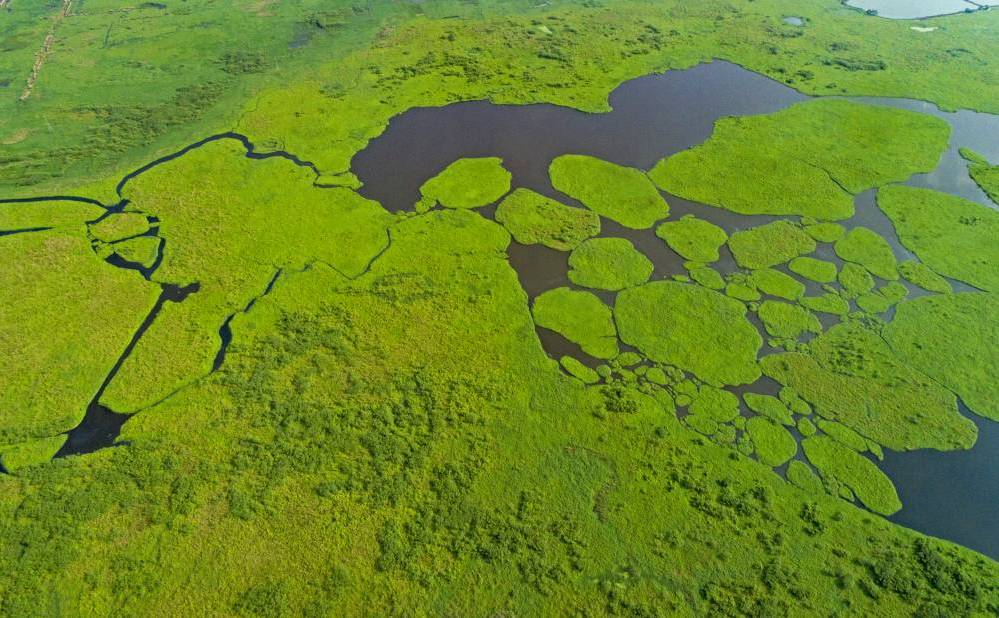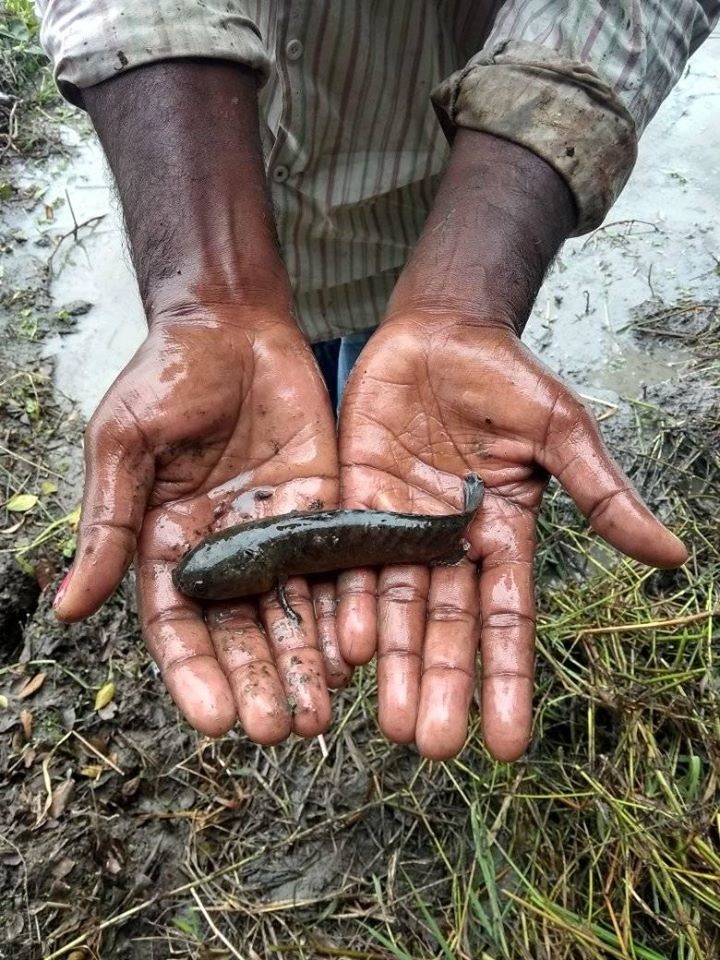Saving the Dankuni Wetlands
Dankuni wetlands is perhaps the largest remaining contiguous marshland in the lower Gangetic floodplains. This is an almost 30 sq km wetland complex with a matrix of tall reed-beds, shallow water bodies interspersed with aquaculture ponds.

The Dankuni wetlands are nothing short of biodiversity hotspots. These vast contiguous stretches of wetland are home to the Fishing Cat, the State Animal of West Bengal, a species protected under the Schedule I, Wildlife Protection Act, 1972. Other Schedule I species found in these wetlands include Monitor Lizards, Lesser Adjutant Stork, Peregrine Falcon, Osprey and Indian Spotted Eagle amongst others. All these species enjoy the same legal protection as a tiger in India. Apart from myriad herpetofauna, birds are the other major life forms thriving in these wetlands including residential species like Avadavats, Moorhens, Jacanas, Herons as well as winter migrants like the Bluethroat, Siberian Rubythroat, Yellow-breasted Bunting, Pied Harrier, Marsh Harrier, and even Ferruginous Pochard. Yellow-breasted Bunting is critically endangered are listed as Critically Endangered under Red List of International Union of Conservation of Nature and Bristled Grassbird and Ferruginous Pochard are listed as Vulnerable. In fact, with a Red-tailed Tropic bird finding its ways into the area after cyclone Fani, the importance of preserving such remnant wetland habitats cannot be stressed enough.
Importance of Dankuni Wetlands to the communities

Supported by the Wildlife Conservation Trust, Heal, in collaboration with The Fishing Cat Project, conducted a social survey of the communities living in Jhakari, a village adjoining the Dankuni wetlands. The study was published in the peer reviewed international journal, ‘Wetlands’. According to the villagers of Jhakari, the Dankuni wetlands provide them 18 ecosystem services; these include food provisioning, water purification and flood control. Further, the wetlands subsidise their living costs and enable them to be self-reliant through a variety of livelihood opportunities, especially landless widows and older residents.
Unfortunately, in the recent years, these wetlands are being eyed by developers. Large scale illegal conversion of these wetlands started from 2012 resulting in complete destruction of some parts of the Dankuni wetland complex. When NGO volunteers including members from PUBLIC and HEAL visited the area in 2013, they were met with a shocking sight – ongoing destruction of large tracts of pristine wetlands. Hundreds of trucks were dumping fly ash in marshes and reed beds irreversibly and drastically changing their nature and character. Large water bodies and reed beds were turned into carpets of fly ash and the denizens of marshes had been pulverised by dumpers and payloaders moving relentlessly over the fragile habitats.
In the above described study, the local communities around Dankuni Wetlands explained their perception of this ongoing degradation and the resulting effect on the wetlands’ ecosystem services. Their quality of life and livelihood had suffered at the hands of the encroachment. The wetlands are integral to ensuring social justice to marginalized, unskilled local communities as well as the society as large and therefore must be protected at all costs.
The battle begins

This picture became the symbol for the fight to protect this wetland habitat.
A Public Interest Litigation (PIL) was filed in May 2013 before the Calcutta High Court. The Court placed a complete embargo on encroachment on a large chunk of Dankuni Wetlands and directed restoration of some heavily affected parts of the wetland. Pursuant to the Court’s order, the district administration carried out restoration in some parts of the Dankuni wetlands by excavating the dumped fly ash.
Subsequently, not happy with the extent of implementation of the Court’s order, the NGOs filed another petition before the Calcutta High Court seeking long term protection of Dankuni wetlands in 2015. This petition was transferred to the National Green Tribunal in 2016. In May 2016, the NGT also passed orders prohibiting any encroachment activity on the wetlands. The NGT’s orders continued to operate as of April 2022.
The final hearing of the matter before the NGT, took place in May 2022. In a landmark judgement, the Tribunal granted protection to all wetlands in the state over 2.25 hectares and directed the formation of a committee to demarcate, identify and protect all of these wetlands by November 2022. Thus, what started from Dankuni will now have state-wide effect. However, this order is of little value unless relevant action is taken in line with the directions laid in it.
In September 2022, HEAL members made multiple visits to Dankuni wetlands and witnessed illegal reclamation and encroachment continuing unabated without any intervention from authorities. They extensively photo and video documented the said illegal reclamations. HEAL is now in the process of formally informing the state authorities regarding these violations and building appropriate documentary evidence for further legal action, in case the state does not act.

